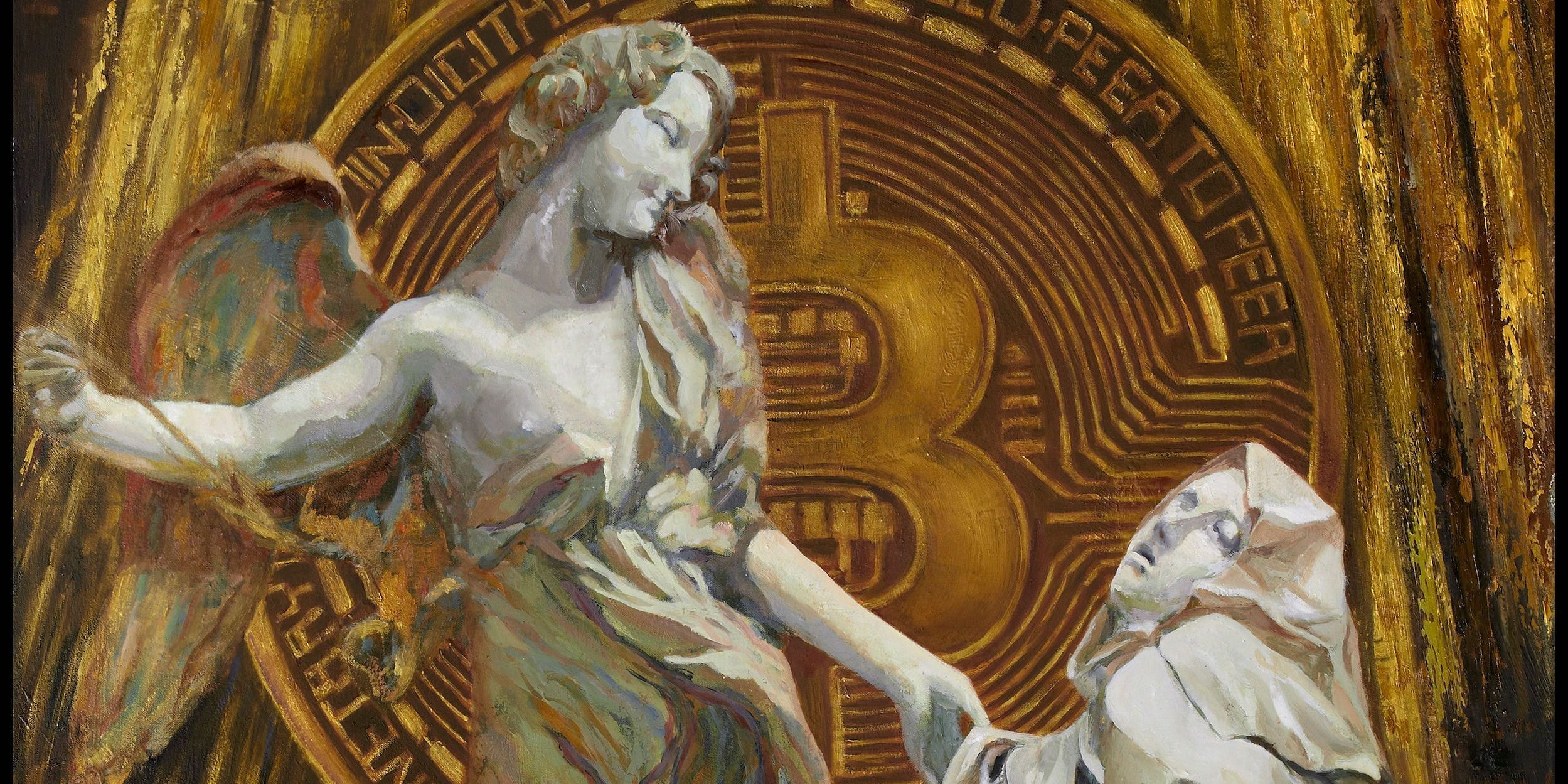
- UK NFT artist Trevor Jones could barely pay his bills five years ago.
- Now with NFT sales surging, Jones has made millions in just one day, the Guardian reported.
- A breakup with his girlfriend followed by a traditional art education pushed him toward NFTs.
Just five years ago, Trevor Jones could barely pay his mortgage.
Then in 2019, he started making non-fungible tokens, aka NFTs, and he hit the jackpot, according to a Nov. 6 story from The Guardian. His well-known piece "Bitcoin Angel," for example, sold for the cryptocurrency equivalent of $3 million.
"I went from having to borrow money from friends to pay the bills to making $4 million in a day," he told the news outlet.
Before being flung into crypto fame, Jones told the Guardian he grew up in a rough logging community in western Canada before moving to Edinburgh where he worked at the Hard Rock Cafe as a waiter. In his early 30s, he and his girlfriend split up, and he went through a crisis that landed him in art school, the Guardian wrote.
In 2012, he started putting QR codes into his art work that would lead people to a digital gallery. While the idea was nonsensical to many onlookers, he started attracting an online following, according to the article.
Seven years later, he began turning his paintings into short videos to sell as NFTs. And now, at 51 years old, he's the most successful NFT artist working in the UK, the Guardian wrote.
Jones is known for taking famous pieces of art and adding a crypto twist. For his 2020 "Bitcoin Bull," he took inspiration from Picasso's bull and added bitcoin and Twitter logos. It sold to crypto collector Pablo Rodriguez-Frail for $55,555.55.
In the past, Jones has touted the potential for the NFT market to continue getting bigger, and maybe even render the traditional art market defunct. In the third quarter alone, NFT sales surged a whopping 704% to $10.7 billion.
"This digital art market is only getting warmed up and it could quite easily take over the $67 billion (physical) art market in the not too distant future," he told Insider previously.

